 15m
15mIn past months, the paramilitary Rapid Support Forces (RSF) violently overran North Darfur’s capital, El-Fasher, in Sudan. What followed was a massacre so horrific the blood stained ground was visible in satellite imagery.
The RSF proudly filmed themselves as they rounded up and executed civilians. If those horrors have come as a surprise to the world – they shouldn’t. It was entirely predictable.
In November 2023, the RSF are accused of committing similar atrocities in the town of Ardamata, documenting it in horrific detail.
Filmmaker Sara Creta gained rare access to the town, and spent months tracking down and recording the testimony of survivors who managed to flee. She then matched their accounts with videos filmed by members of the RSF of the atrocities they were committing.
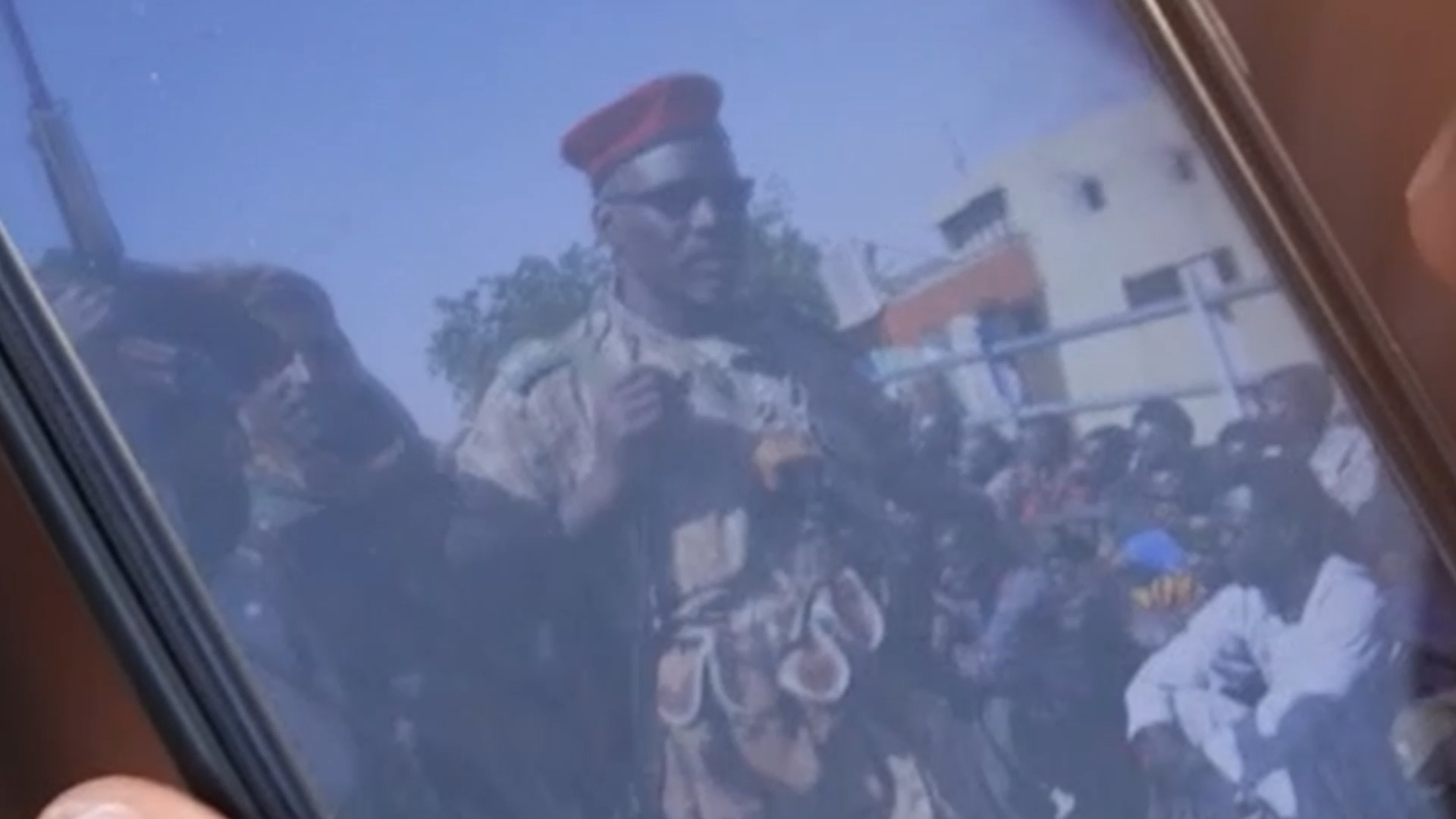
Geolocating that footage she forensically built up a map of what happened and where. Much of the material is extremely graphic, far too horrific to broadcast.
With real footage and testimony, she has worked with u2p050 studio using an AI assisted 3D process, to reconstruct the events of that day – bringing to life the memories of those who survived.
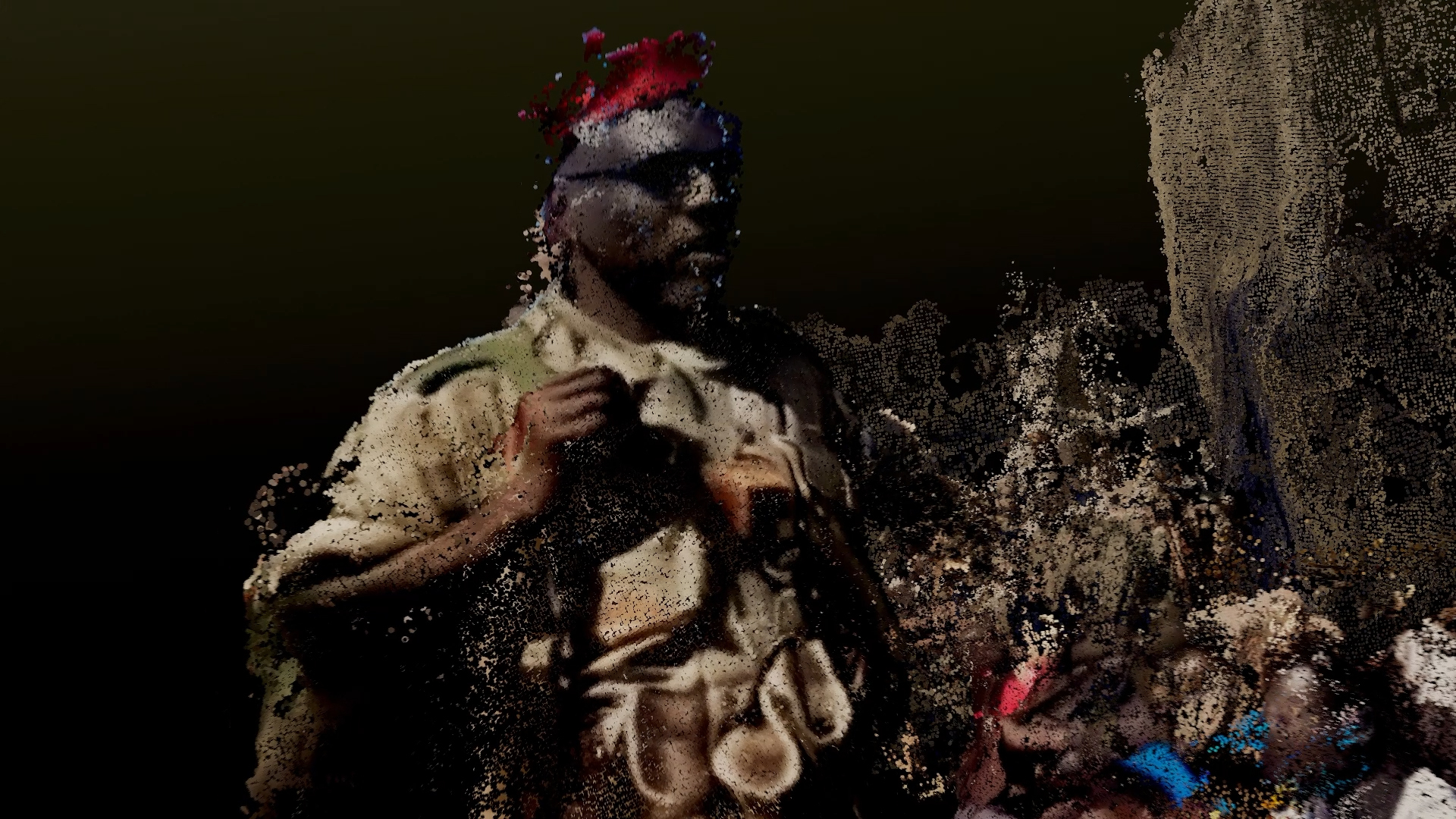
NOW: The fall of El-Fasher
On 26th October after an 18 month siege, the paramilitary RSF entered El-Fasher, the capital of North Darfur. What followed was a massacre so horrific the blood stained ground was visible in satellite imagery. But you didn’t need a satellite to reveal the murderous rampage, the RSF filmed themselves as they rounded up and executed local people.
The group has claimed in the past, without evidence, certain social media footage has been “fabricated”.’
The world paid attention for a few days to a war that has been largely ignored. But this was not the first massacre that the RSF took pride in documenting in all its horrific detail. This is a pattern of behaviour going back years.
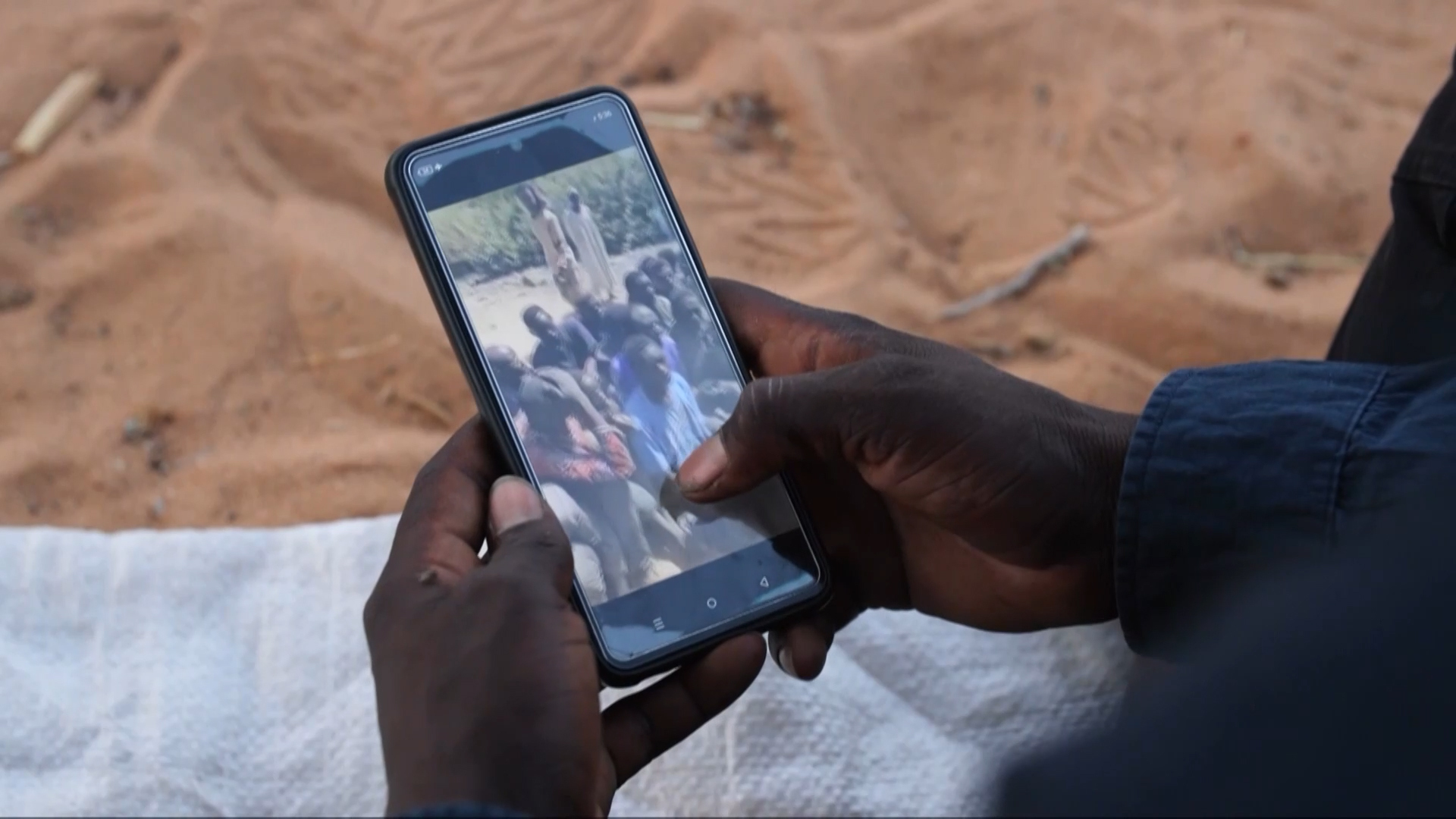
THEN: Ardamata
In November 2023 after days of intense fighting, the RSF and allied Arab militias moved into the town of Ardamata, in West Darfur. The Sudanese Armed Forces retreated, many civilians fled – but many more stayed after being told they would not be harmed.
As they entered the town the RSF went house to house, seeking out mainly ethnic Masalit men. Scores of people were rounded up, they were tortured, humiliated and hundreds were murdered. The UN says more than 800 people were killed but local NGOs say the figure is a least 1,300.
When the killing ended, some of those who survived managed to escape. Filmmaker Sara Creta spent months tracking down survivors in order to record their account of what happened in Ardamata.
Recording nearly 15 hours of harrowing interviews she meticulously went over the events with survivors. She then matched that testimony with video filmed by members of the RSF themselves of the atrocities they were committing. Geolocating that footage she forensically built up a map of what happened and where during the massacre.
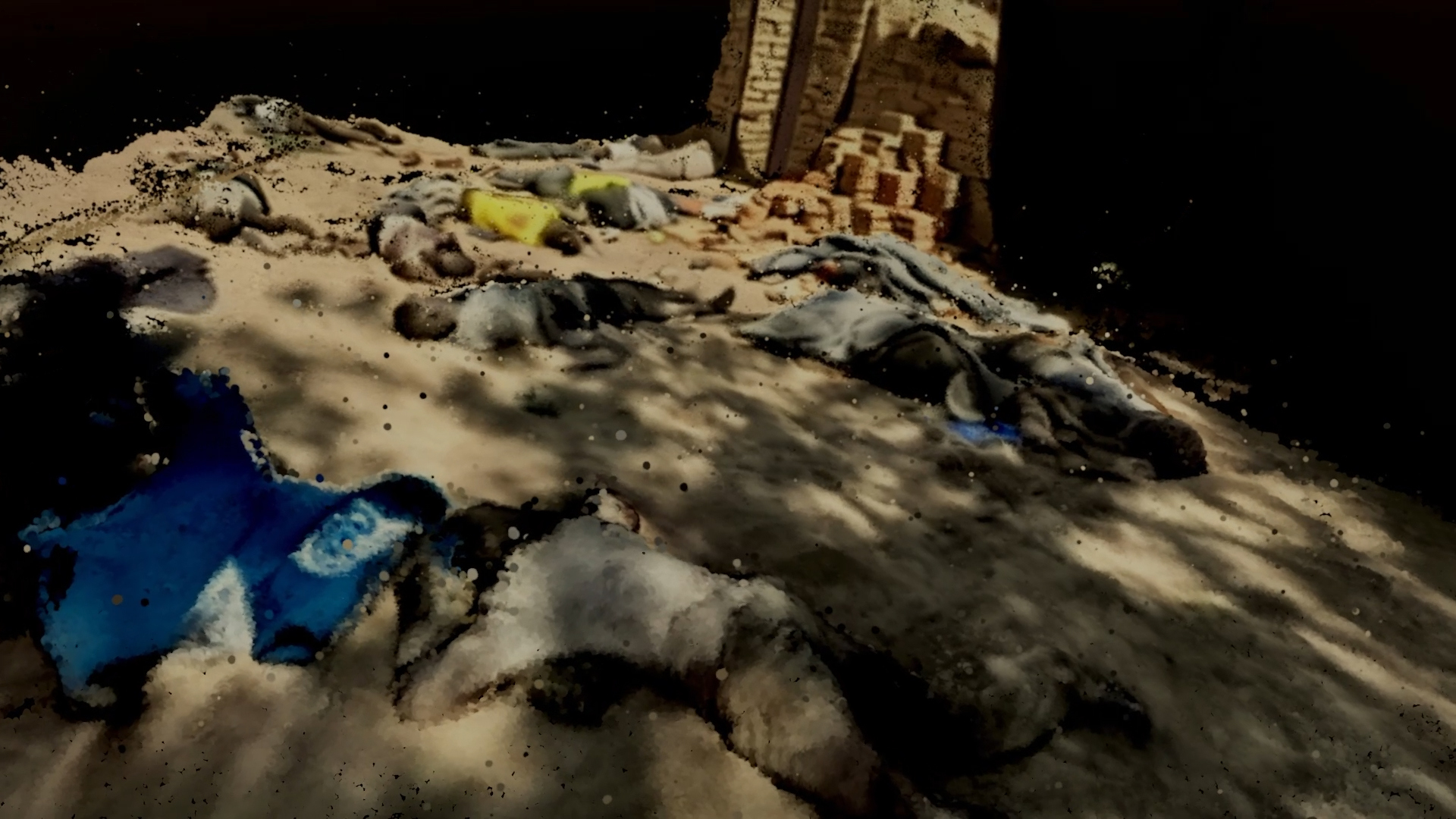
Graphic imagery
The imagery that the RSF filmed in Ardamata is by intent extremely graphic, much of it too disturbing to be broadcast. The challenge in telling the survivors’ stories and doing justice to them, would mean employing a unique and groundbreaking form of storytelling.
Using Gaussian splatting and point-cloud in Unreal Engine (a real-time 3D creation platform originally developed for video games), Sara, producer Millicent Teasdale, and the French collective u2p050 reconstructed the events of the massacre. Everything is grounded in real footage and testimony. The fractured texture reflects the shattered way these events live in the memories of those who survived them – splintered by trauma.
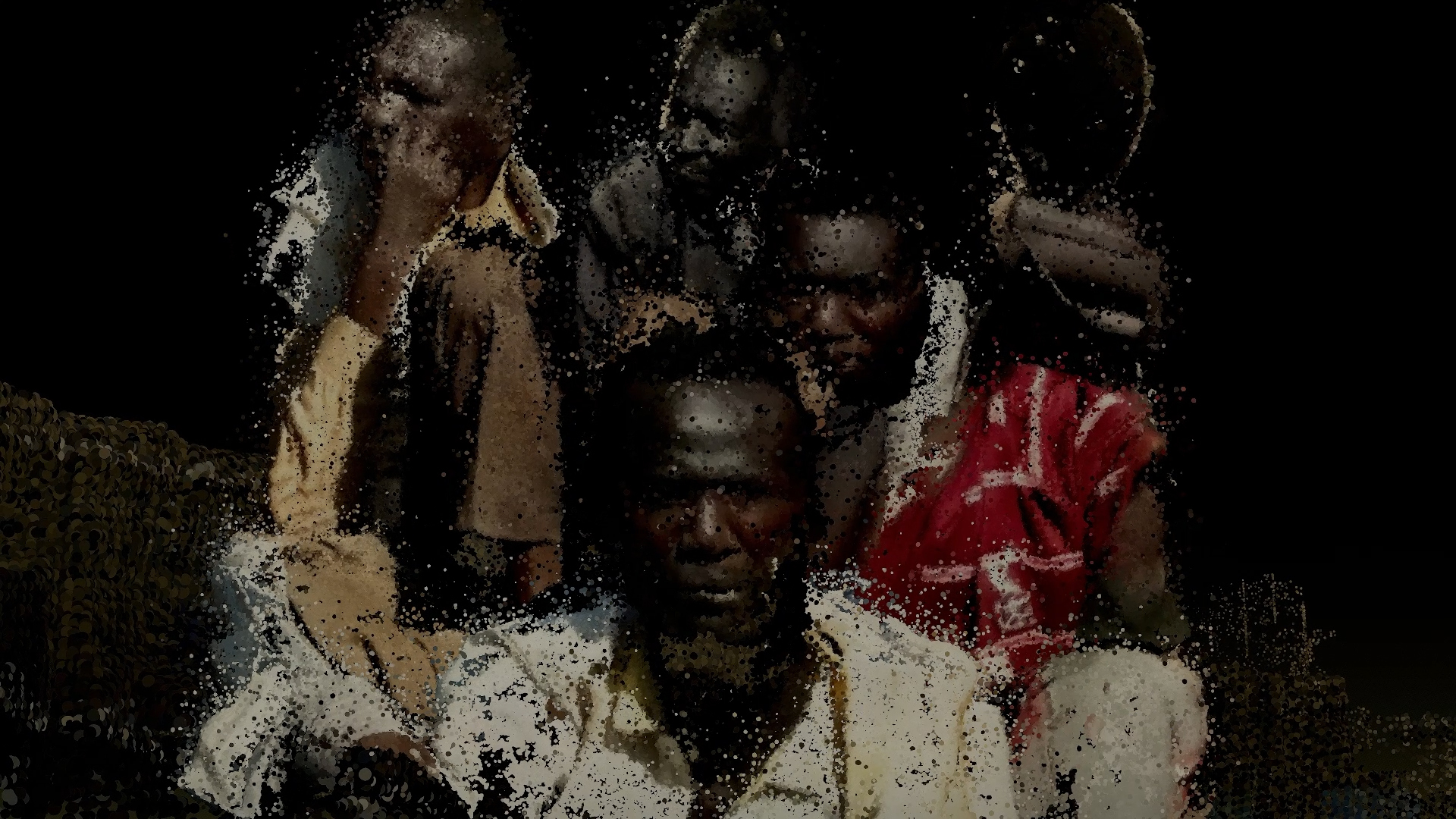
Emotional truth
The audience can move within the scene and experience it through the survivors’ viewpoint. This offers a sense of proximity to the events while avoiding the retraumatising impact of raw perpetrator footage.
This form of storytelling invites the viewer not just to observe the events but experience the emotional truth of what survivors lived through.
Credits:
A film by
Sara Creta
Produced by Channel 4 News
Producer
Millicent Teasdale
Executive Producer
Dani Isdale
Head of Foreign
Federico Escher
AI-Enhanced Photogrammetry & Point-Cloud Reconstruction
3D Animation & Editing
Clémence Plénet/u2p050
Sound Design & Mix
Nicolas Mioux-Riton/u2p050
Field Producers
Abdalsamea Ahmed Fadul
Ahmed Khamis
Noureldin Nahar
Translation
Mohammed Abdalhaleem
In collaboration with
Views of Violence /University of Copenhagen
Special thanks to
Jamal Rhoma
Khalid Albaih



